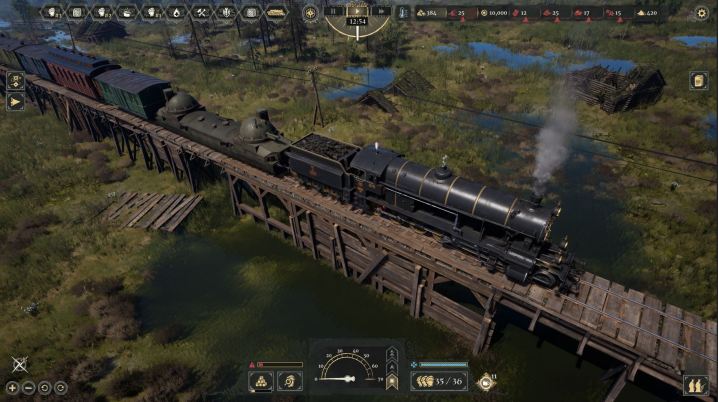The pitch for Last Train Home probably isn’t what you’d expect from a PC strategy game. It Adapts the experiences of Czech Legionnaires who had to fight their way across Russia and Siberia during the eve of World War I and the dawn of the Russian Civil War. They went across the country by train, fighting to survive station by station, so they could get on a boat in eastern Russia and get home. Even as someone who enjoys reading up on history, it’s a story I hadn’t heard — and I certainly didn’t expect to learn about it from a video game. It’s a surprising premise that takes me back to playing The Oregon Trail, which exposed a whole new piece of American history to me as a kid.
Interaction is sometimes the best way to get the emotional heft of a story across. The journey Last Train Home depicts feels like it’d work best in a video game, where players can personally experience the feeling of scavenging for ever-dwindling supplies while micromanaging soldiers in the hopes that as many of them can get home as possible. After a few hours of play, I see how gaming was the best medium to make people more aware of the emotional pathos of this story. Ashborne Games and THQ Nordic delivered a captivating real-time strategy and survival game that does just that with Last Train Home.
The Oregon Train
Last Train Home feels like the unexpected hybrid of Company of Heroes, This War of Mine, and The Oregon Trail. Players control a train and a small group of Czech Soldiers, and the goal is to constantly push forward from station to station until they reach the eastern coast of Russia. Resources like fuel, food, and other resources are ever-dwindling as time passes, progress is made, the train’s size and capabilities expand, and soldiers get exhausted or hurt, reducing productivity.
If you’ve played The Oregon Trail or This War of Mine, you’ll immediately understand the pressure these systems create across the journey. To survive, I had to be very considerate and careful with sending out squads to gather and barter for resources from various locations along the route, ensuring no soldier got too tired or injured and that I had enough resources to survive. These relentless and daunting gameplay loops effectively made me empathize with the real-life struggles that the game is based on.

Occasionally, Last Train Home forced me into a fight, which played out in small-scale, real-time strategy encounters. I could command a squad of up to eight soldiers spread across different classes with special abilities, like Scouts who could see through fog-of-war on the map and machine gunners who could hunker down behind cover and shoot anything that entered their cone of vision. These segments could get tense, although some quirks of classic RTS systems would occasionally rear their head.
Last Train Home is loose with what counts as full cover, so it got frustrating when an enemy I directed my soldiers to attack was hiding behind a skinny fence post and still not getting hit by any bullets. The random factor is more frustrating than fun in a game where resources are scarce. Despite that problem, I appreciate these RTS segments for how they feed back into the survival systems, as I had to try to keep injured soldiers healthy and worked toward upgrading the train to help me in combat. It also immersed me in some of the intense firefights the Czech Legionaries got into — specific characters and interactions are fictional, while the broad strokes of particular locations and battles aren’t — in a way a film or book couldn’t.

Video games can be an effective teaching tool. We’ve seen this with games like The Oregon Trail or the Discovery Tours in Assassin’s Creed Origins, Odyssey, and Valhalla. Last Train Home goes a step further, demonstrating how entire stories, sometimes even historical ones, may best fit this interactive medium. Of course, there are controversies and delicate situations that some games based on actual events fail to achieve the nuance of.
Thankfully, Last Train Home does not encounter that problem as a captivating RTS with survival elements just as concerned with making the emotional heft of the journey as understandable as the gameplay. This was a story and experience best served to modern audiences in video game form; I’m glad Ashborne Games and THQ Nordic saw these events as an experience worth adapting.
Last Train Home is available now for PC.



